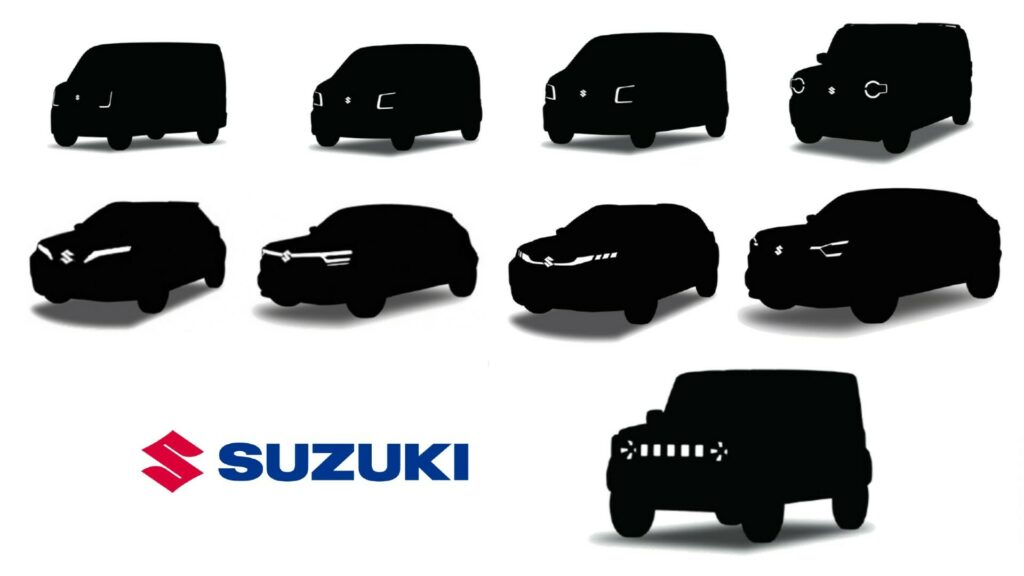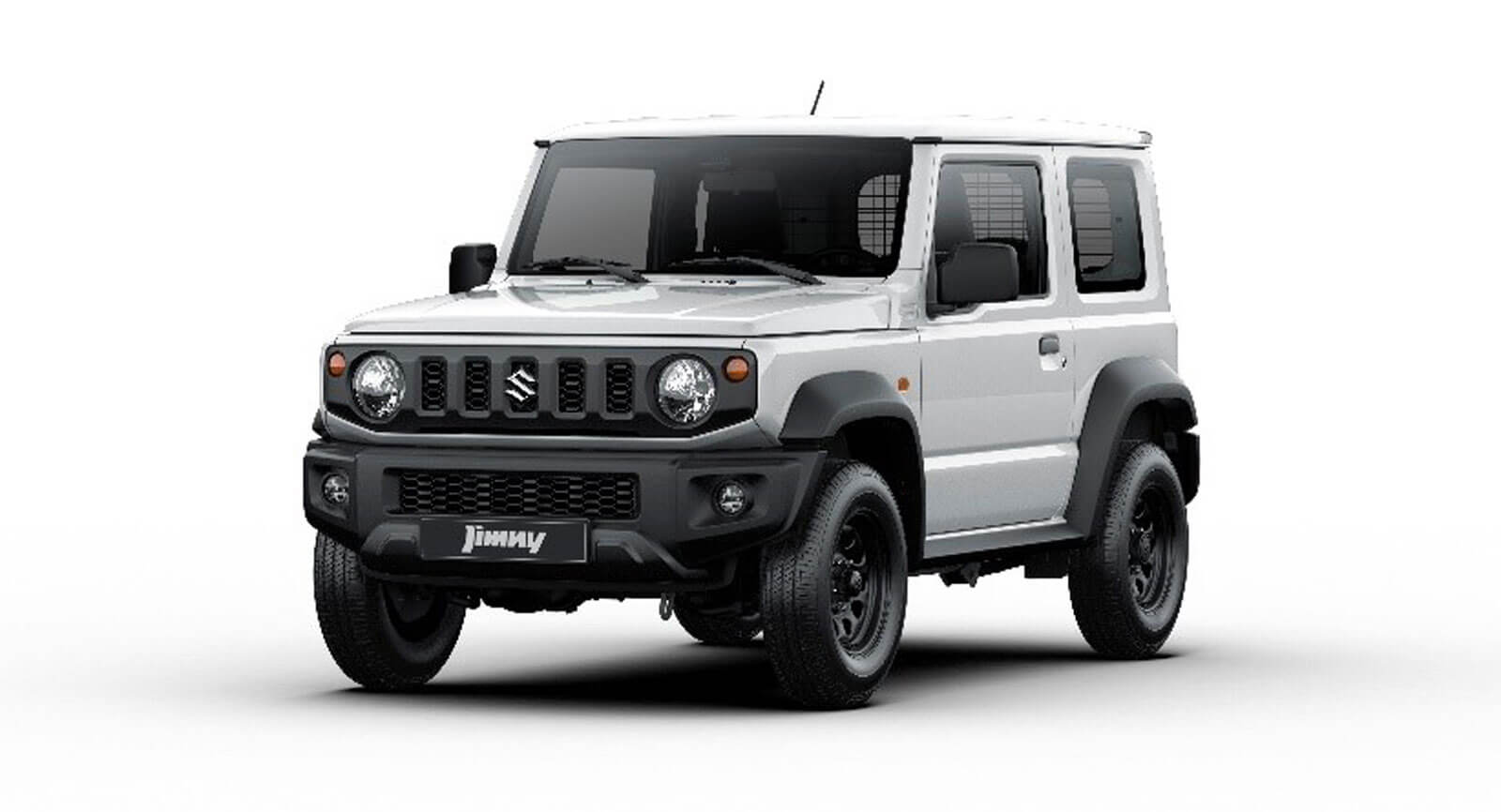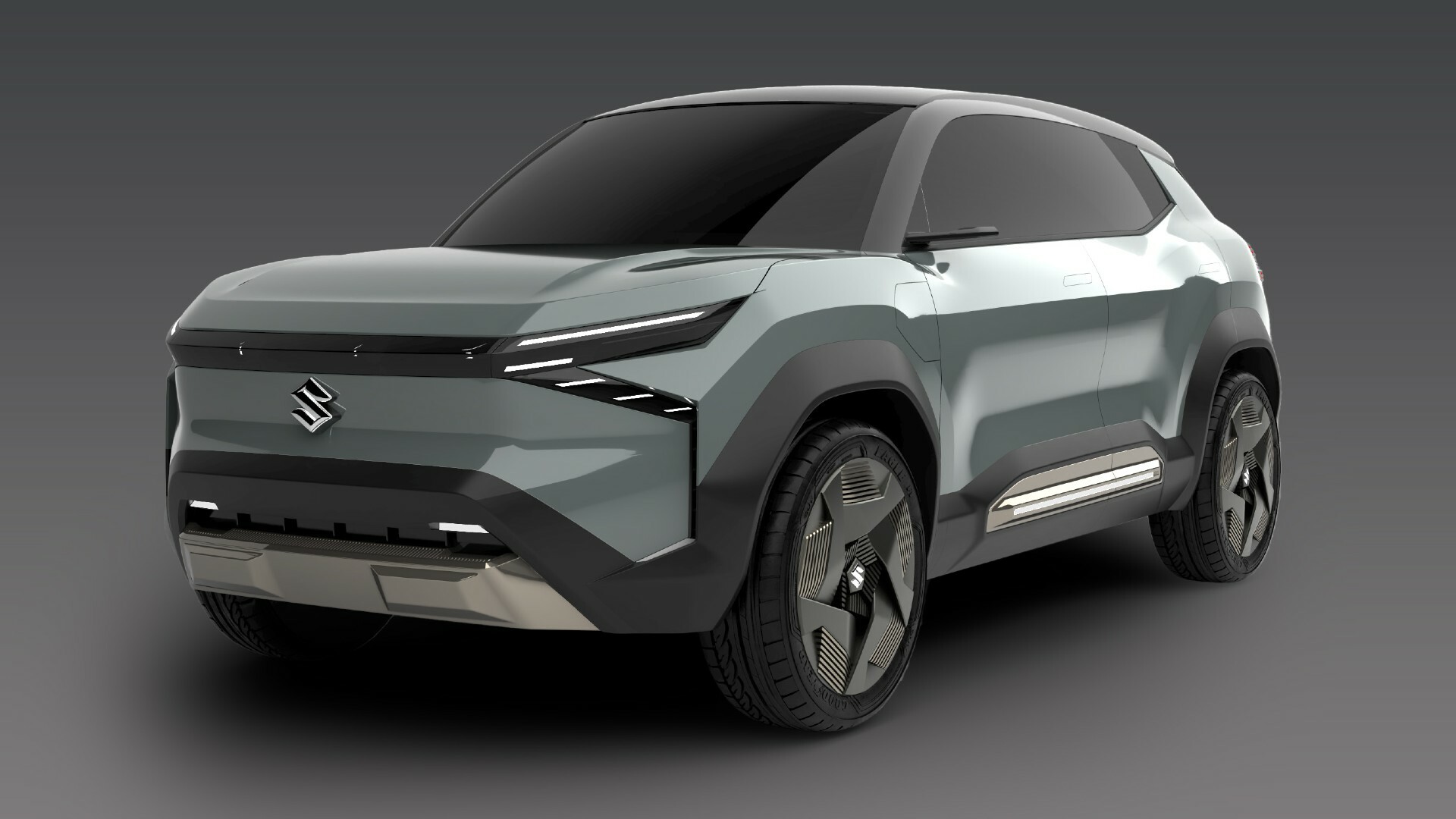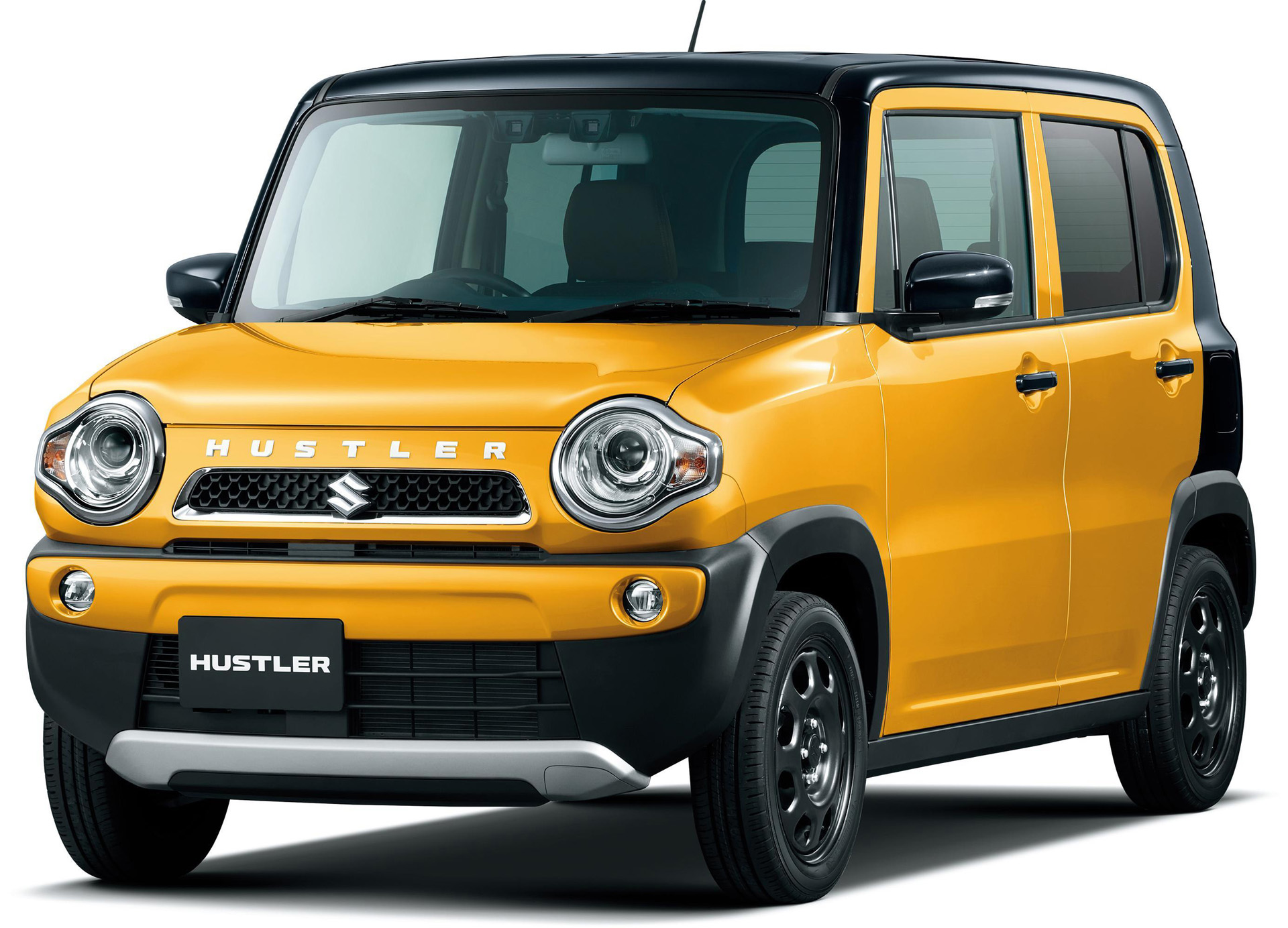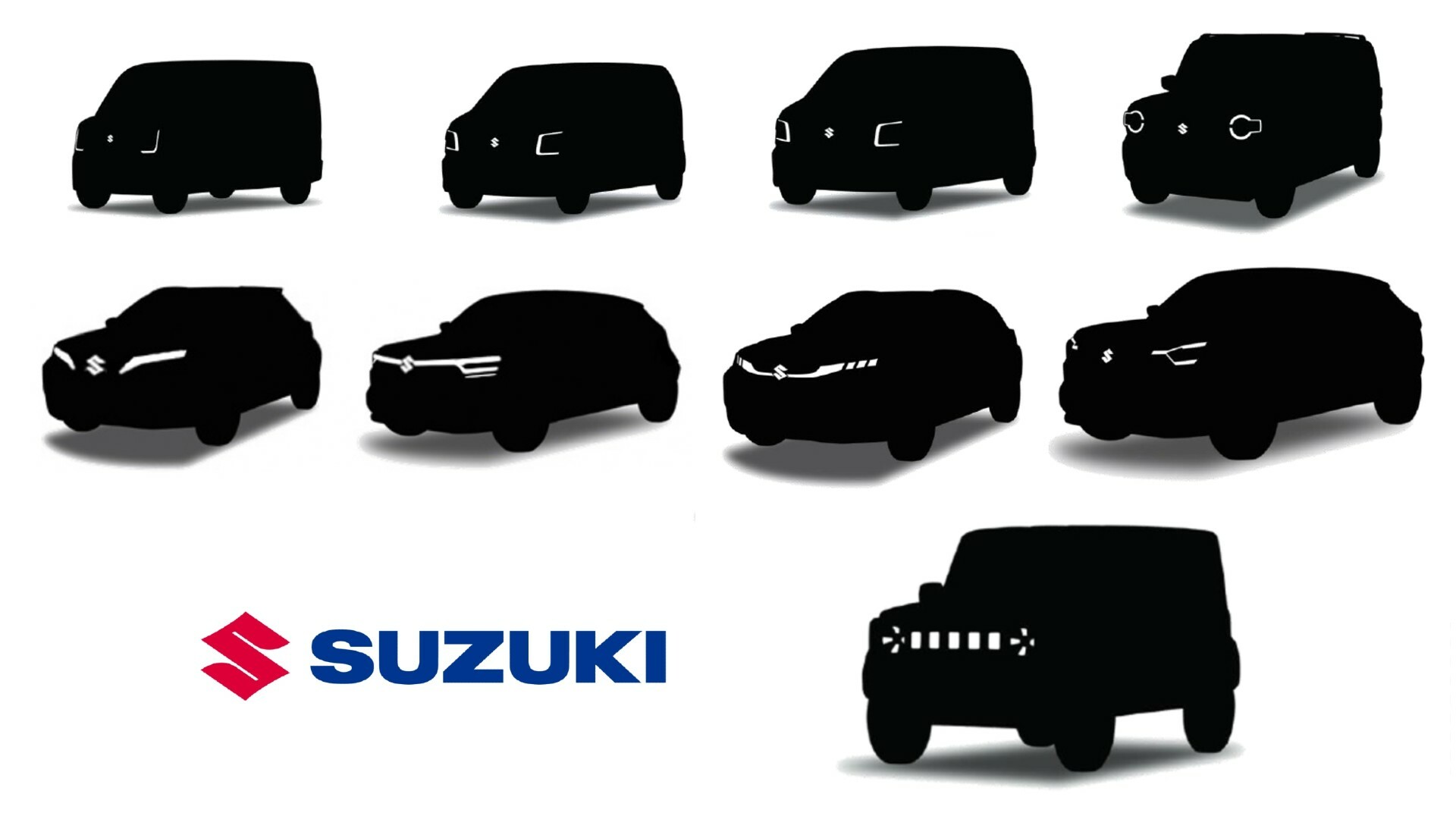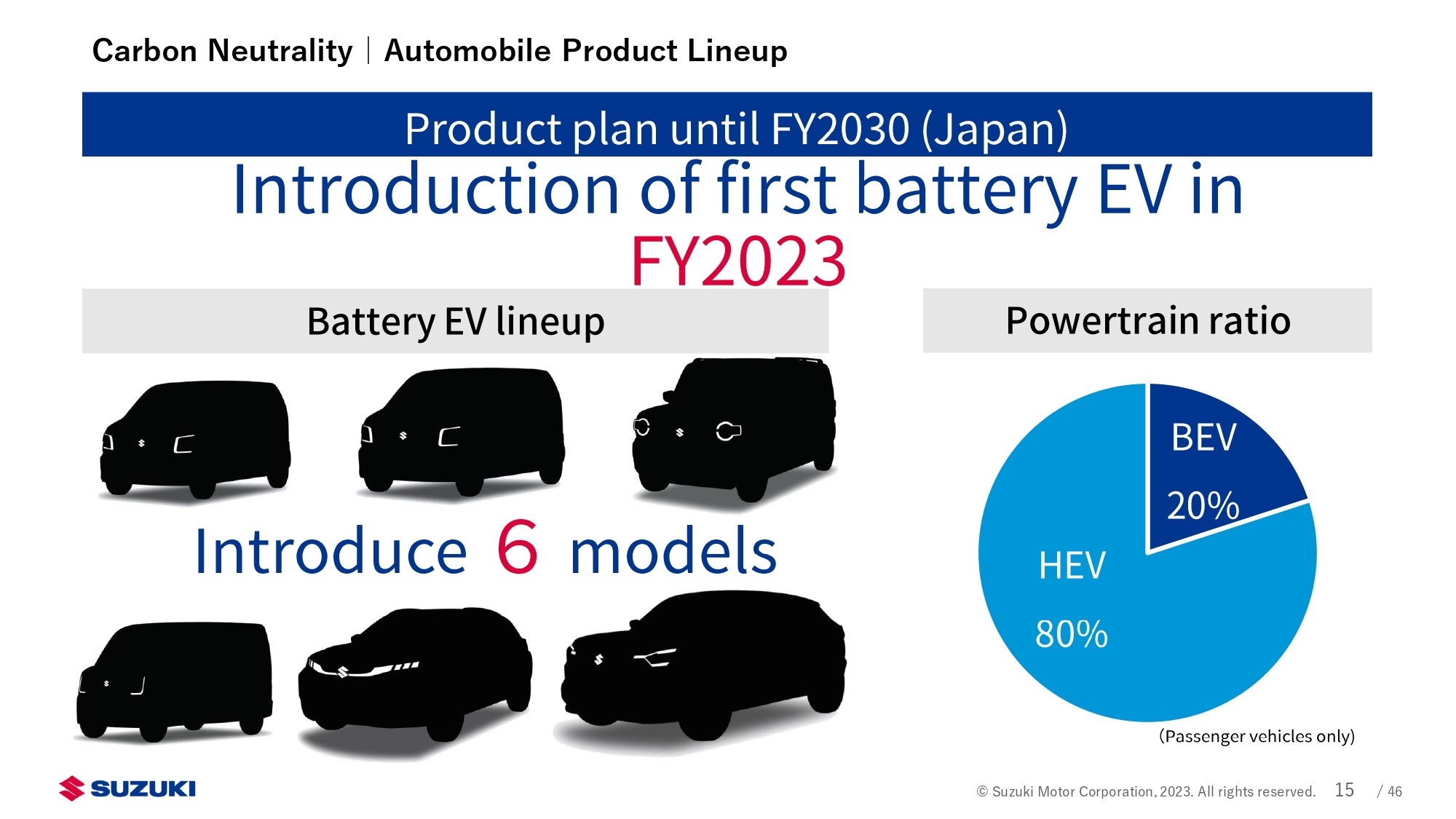Suzuki announced its electrification plans for 2030, teasing a number of EVs for Europe, Japan, and India as part of a ¥2 trillion ($15 billion) investment for all of its Automotive, Motorcycle/ATV, and Marine divisions. In terms of automobiles, among the electric SUVs and kei cars set to debut by the end of the decade, there is a battery-electric Suzuki Jimny and the production version of the recently revealed eVX concept.
Suzuki’s focus markets are India, Japan, and Europe, with Africa also mentioned in the presentation as a market with a promising future. Thus, the automaker previewed the EV debuts individually for each market, showing the silhouettes and lighting signatures of the upcoming models.
Read: Suzuki Jimny 5-Door Debuts Adding Extra Practicality Into The Mix
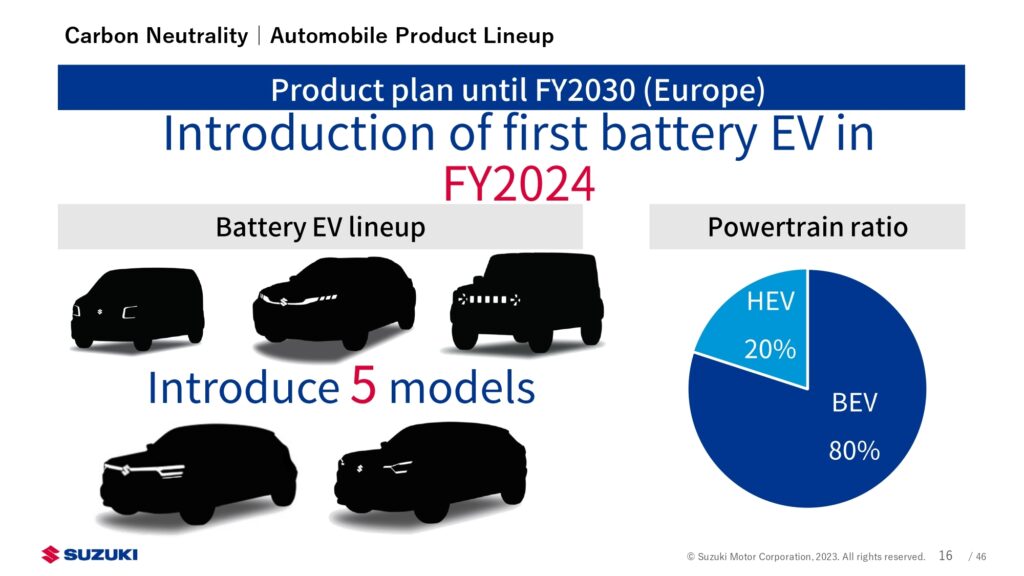
Starting with Europe, the highlight is the EV variant of the Suzuki Jimny which is depicted with an illuminated grille and modern LED graphics on the round headlights. We don’t have any information on the model but it is expected to maintain its ladder-frame architecture and most of its exterior and interior design albeit with a refresh. Besides the BEV, Suzuki is also planning a mild hybrid version of the Jimny, allowing it to be sold in Europe as a passenger vehicle (it is now offered in two-seater LCV form due to emission regulations).
Next to the silhouette of the Jimny EV we can see an SUV that appears to be the Suzuki Fronx. The model was revealed earlier this month in India but it seems that Suzuki is planning on offering an EV variant in Europe. Below, there are two more SUVs – one of them is unknown (could it be the next generation of the Vitara?), and the other looks like the production version of the eVX concept. Finally, there is a city car that appears to be smaller than the currently available Ignis, rounding up the five EV debuts.
The first electric Suzuki in Europe will arrive by 2024, while the automaker has already confirmed that the production-ready eVX is expected in 2025. Suzuki wants EVs to account for 80% of its European lineup by 2030, with the rest 20% being hybrids. Mind you, Europe will effectively ban ICE-powered vehicles by 2035, forcing automakers to speed up their electrification plans.
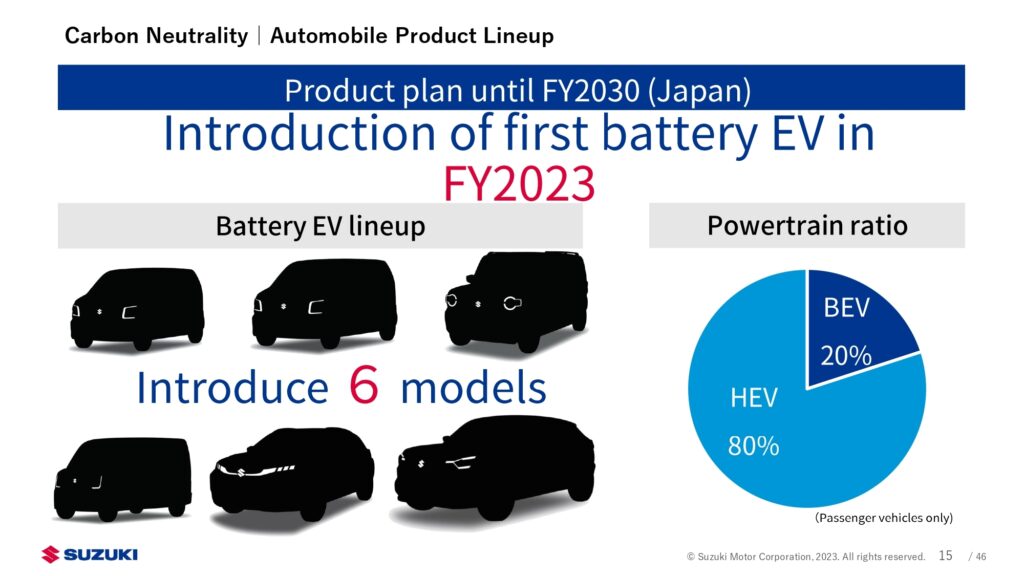
For its home market in Japan, Suzuki announced six EV launches. The silhouette of the unknown kei car appears twice, probably hinting at almost identical-looking passenger and panel van bodystyles. There are two more kei cars, with one of them being the electric version of the Suzuki Hustler. One of the other could be the successor of the Every, although it could also be a successor to the Spacia or the Wagon R. Finally, the Japanese EV lineup will also include the zero-emission variants of the Fronx and the production-ready eVX SUV.
Japan will get its first Suzuki-branded EV in 2023, which is one year sooner than Europe. Due to the different emission regulations, Suzuki wants EVs to account for 20% of its Japanese range by 2030, with the remaining 80% being hybrids.
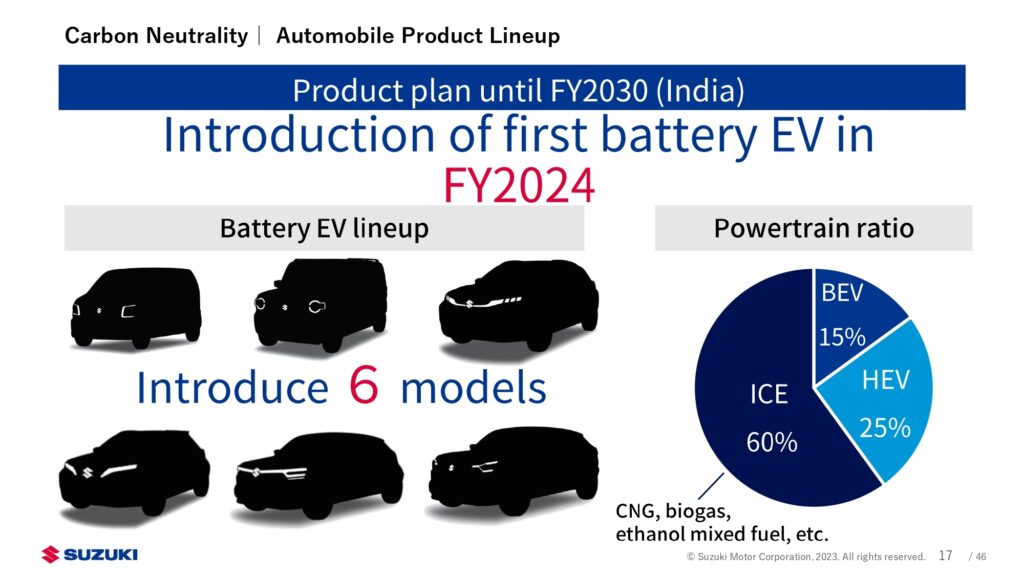
Last but not least, Suzuki plans six new EV launches for the Indian market by 2030, with the first one scheduled for 2024. The highlight here is an unknown small SUV that looks different from the currently available Brezza. This model is the only one not shared with other markets. Predictably, India will also get the Fronx EV and the eVX, alongside the unknown SUV that also appeared in Europe, and a couple of kei cars including the adventurous Hustler.
Suzuki’s future range mix in India will be quite different than Europe and Japan, with significantly less electrification. More specifically, by 2030 ICE-powered models will account for 60% of the range, although those include other types of fuels besides petrol (CNG, biogas, and ethanol-mixed fuels). Fully electric models will only account for 15%, with the remaining 25% being hybrids.
Suzuki wants to achieve carbon neutrality by 2050 in Japan and Europe, and by 2070 in India where the EV transition is progressing a lot slower. The aforementioned targets are not only for the automotive sector of Suzuki but also for motorcycles and marine products. Speaking of two-wheelers, the company will unveil 8 new fully electric motorcycles by 2030, when the percentage of its electric and combustion-engined bikes on a global basis will be 25% and 75% respectively.




